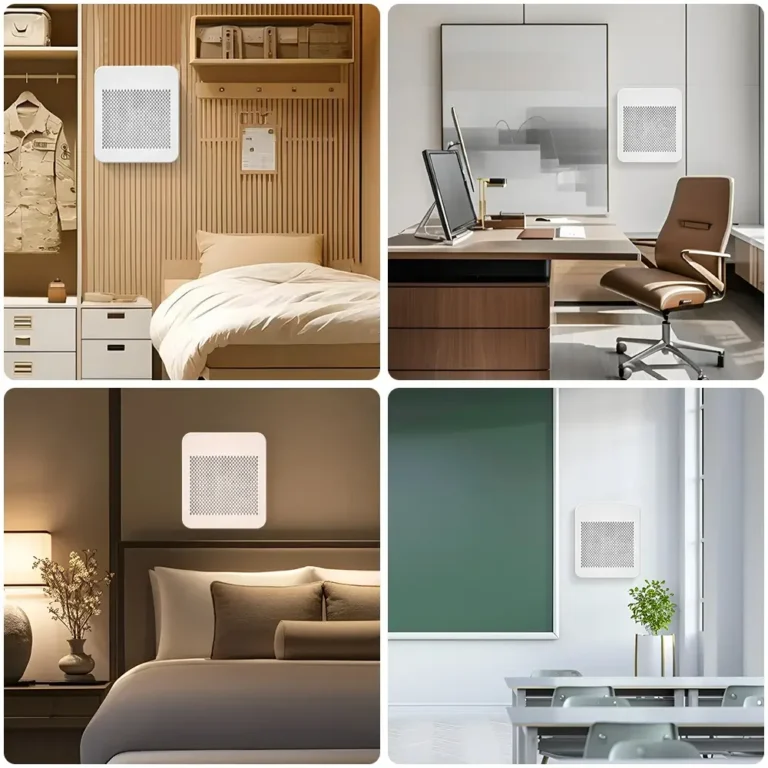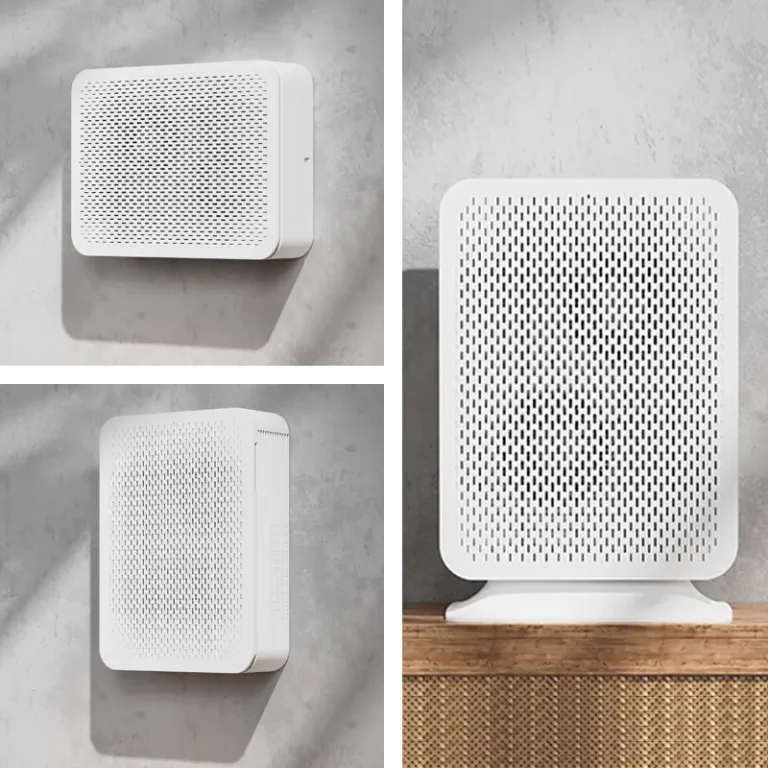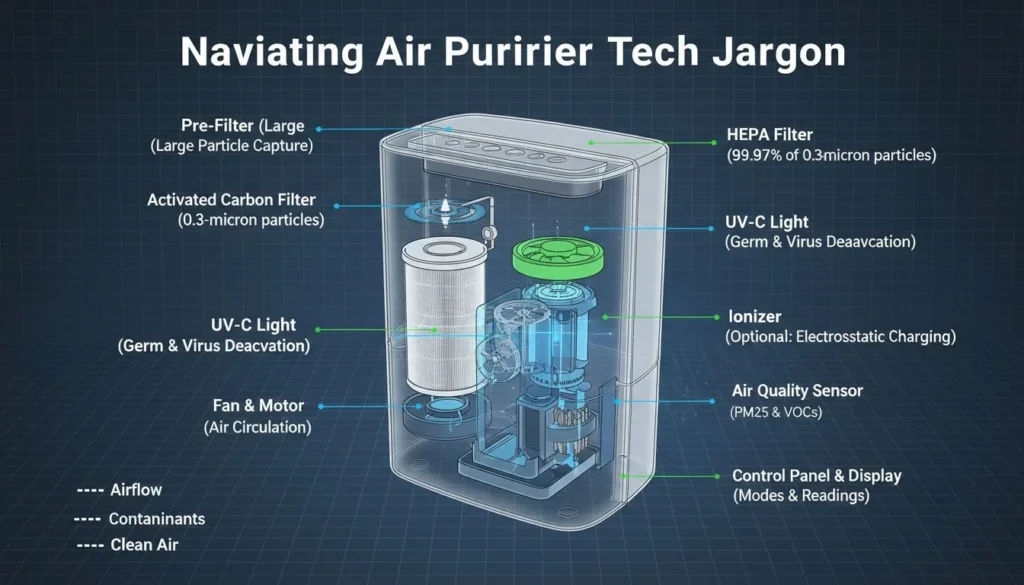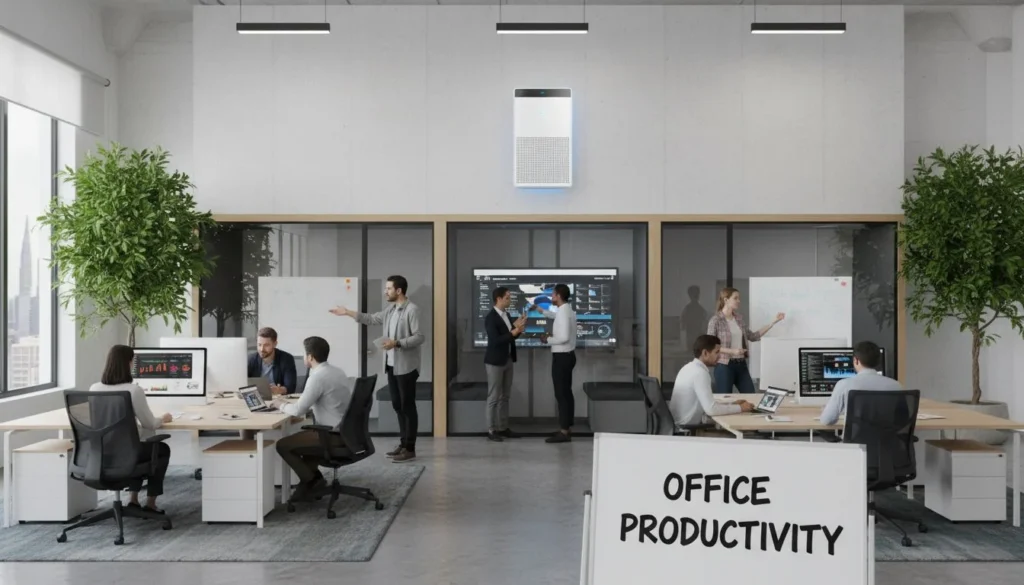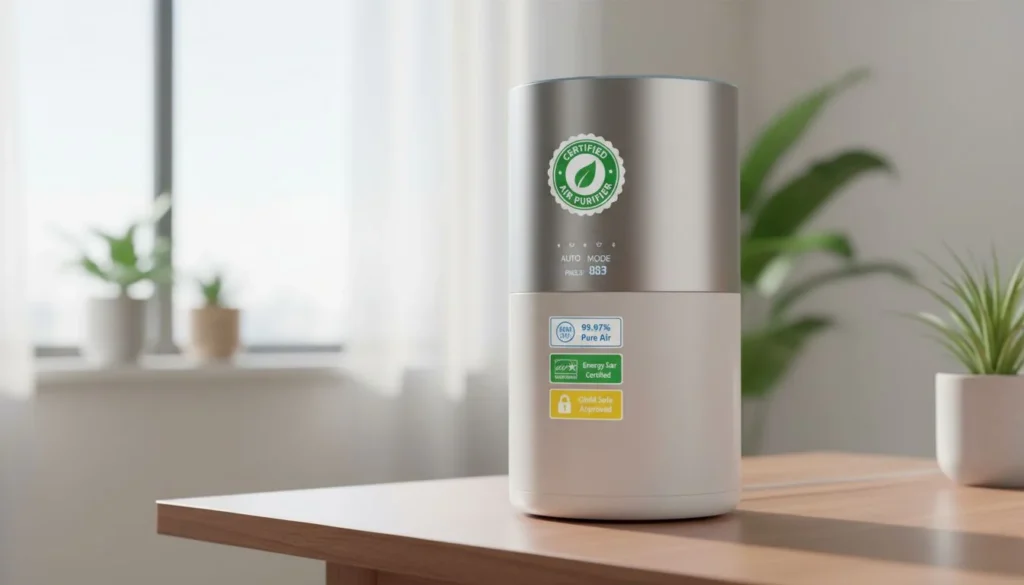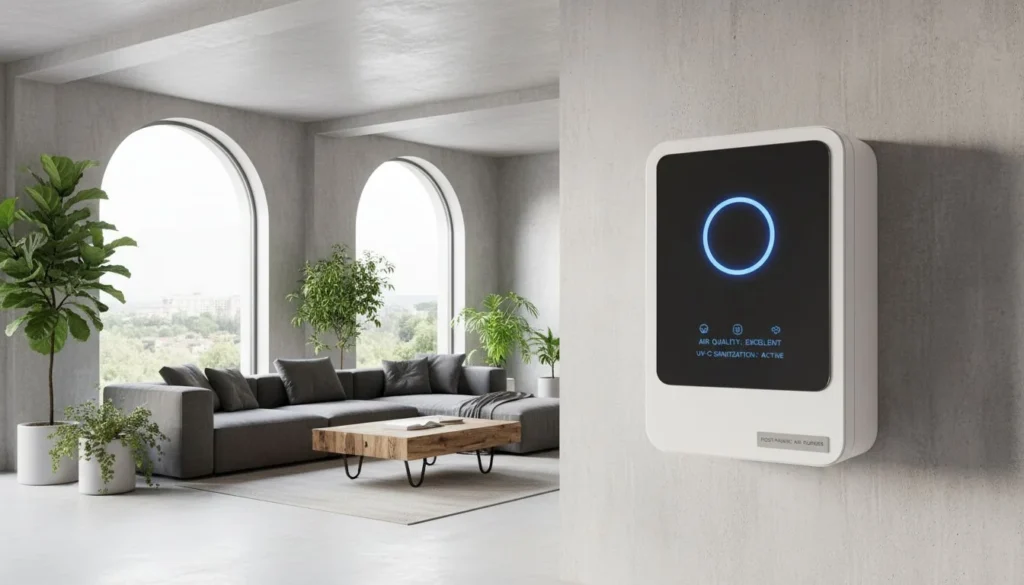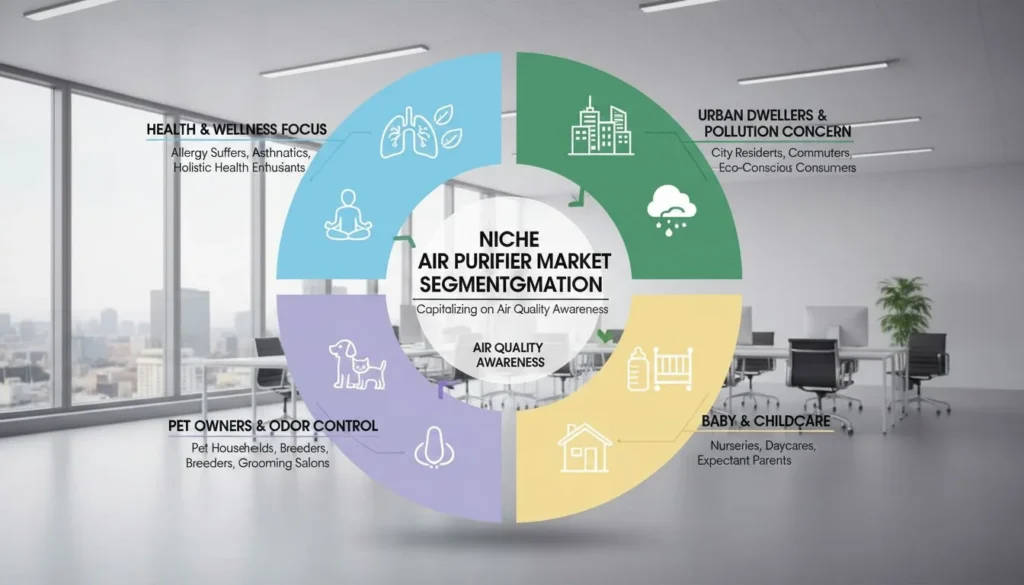
هل انتابك الفضول من قبل لمعرفة مصدر أجهزة تنقية الهواء الموثوقة من BlueAir؟ دعنا نستكشف قصتهم!
تأتي معظم أجهزة تنقية الهواء من BlueAir من فوشان، الصين. يساعد هذا الموقع على تقليل نفقات الإنتاج وزيادة المبيعات عبر الإنترنت. يعمل الموردون في شنتشن ودونغوان بشكل وثيق مع BlueAir. فهم يحافظون على سلسلة توريد قوية. يتم تلبية الاحتياجات العالمية بكفاءة. إنهم كذلك بالفعل.
لقد اكتشفت قصة تصنيع شركة BlueAir وشعرت بالدهشة الشديدة من الأنشطة الخفية. إنها تنطوي على أكثر من الموقع. فهي تنطوي على أسباب أيضاً. وسّعت شركة BlueAir مورديها بعد استحواذ يونيليفر عليها. لقد غيروا استراتيجيتهم بسبب المنافسة القوية عبر الإنترنت. لقد ارتفعت العلامات التجارية لتنقية الهواء بالفعل منذ جائحة كوفيد. تتطلع BlueAir إلى توسيع المصانع خارج الصين، في أماكن مثل فيتنام أو المكسيك. إن مراقبة تغير العلامات التجارية مع الضغوط العالمية وضغوط السوق أمر مثير للاهتمام. إنها تحافظ على نظافة هوائنا!
أجهزة تنقية الهواء BlueAir مصنوعة في فوشان، الصين.صحيح
قامت شركة BlueAir بتحويل الإنتاج إلى فوشان لتحقيق فعالية التكلفة والمبيعات عبر الإنترنت.
لا يوجد لدى BlueAir أي موردين خارج الصين.خطأ
لدى BlueAir موردون في شنتشن ودونغقوان، وكلاهما داخل الصين.
كيف تطورت استراتيجية تصنيع شركة BlueAir مع مرور الوقت؟
تعال معي في رحلة عبر استراتيجية التصنيع المتغيرة لشركة BlueAir، وهي قصة قوة وأفكار جديدة في الأوقات العالمية الصعبة.
لقد غيرت شركة BlueAir استراتيجيتها التصنيعية على مر السنين. ففي السابق، كانت تعتمد على مورد واحد فقط من الصين. أما الآن، فلديها سلسلة توريد عالمية مع العديد من الموردين. وربما يساعدهم هذا التغيير في توفير المال. كما أنه يمنحهم القوة. تضرب التحديات الجيوسياسية العالم في كثير من الأحيان. ويمكن لشركة BlueAir التعامل معها الآن.
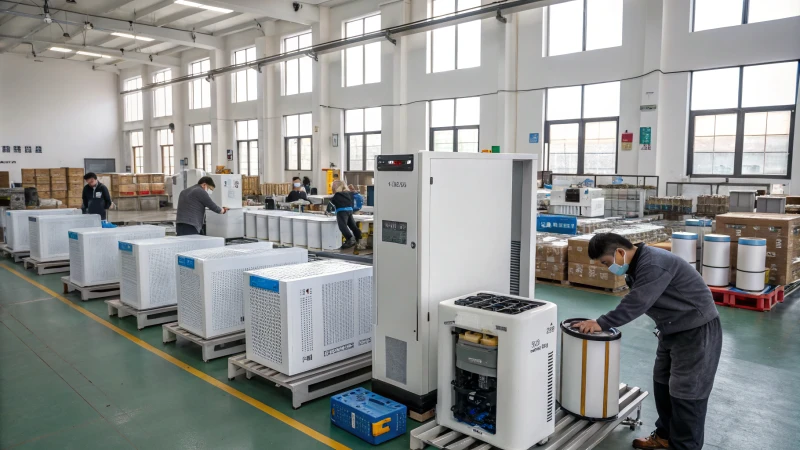
التغيير في مواقع التصنيع
في البداية بلو إير1 اعتمدت بشكل كبير على موردينا الموثوق بهم في مقاطعة قوانغدونغ بالصين. وشملت المواقع الرئيسية شنجن ودونغقوان وفوشان. ومع ذلك، مع مرور الوقت، بدأت شركة BlueAir في فهم رؤية أوسع نطاقاً - ليس فقط تقليل النفقات ولكن أيضاً زيادة مبيعاتنا من خلال منصات الإنترنت مثل أمازون. وكان الهدف هو الوصول إلى المزيد من الناس دون تكاليف البيع بالتجزئة المعتادة.
آثار المنافسة في السوق
إن المشهد التنافسي2 أثرت مرحلة ما بعد COVID-19 بشكل كبير على نهج BlueAir. أصبح سوق أجهزة تنقية الهواء أكثر ازدحاماً مع اكتساب العلامات التجارية الجديدة مثل Levoit شعبية كبيرة، مما يعني أننا بحاجة إلى إعادة التفكير في استراتيجياتنا لنظل على صلة بالسوق التنافسية عبر الإنترنت.
| السنة | الاستراتيجية الرئيسية | التأثير |
|---|---|---|
| 2000s | الموردون الصينيون الحصريون | الاتساق والمرونة المحدودة |
| 2010s | الموردون المتنوعون | زيادة المرونة والمرونة |
| 2020s | استراتيجية سلسلة التوريد العالمية | تعزيز القدرة التنافسية والوصول |
النظر في استراتيجية الصين+1
مع تزايد المخاطر الجيوسياسية، شاركت في محادثات حول استراتيجية "الصين+1". يركز هذا المفهوم على تنويع إنتاجنا خارج الصين من خلال البحث عن شركاء تصنيع خارج الصين في بلدان مثل فيتنام وتايلاند والمكسيك. تساعدنا هذه الاستراتيجية على تجنب المشاكل التجارية وتخلق فرص نمو جديدة.
تأثير عمليات الاستحواذ والشراكات
عندما استحوذت شركة يونيليفر على شركة بلو إير اكتسبنا إمكانية الوصول إلى العديد من الموارد الجديدة. وقد أتاح هذا الاستحواذ لشركة بلو إير الاستفادة من موارد وخبرات إضافية، مما سهل التحول نحو سلسلة توريد عالمية أكثر قوة. وقد مكّن التعاون مع مختلف المصنعين شركة بلو إير من تحسين عمليات الإنتاج وتقديم منتجات مبتكرة بكفاءة.
خذ هيسو إير3على سبيل المثال فقد تطورت من شركة تصنيع حصرية إلى جزء أساسي من شبكتنا الأوسع نطاقاً. تبرز مثل هذه الشراكات كيف وازنت شركة بلو إير بين العلاقات القديمة والتعاون الجديد لتحقيق النمو الاستراتيجي.
جهود التكنولوجيا والاستدامة
تركز استراتيجيتنا المتقدمة على نقل المنتجات بكفاءة ومسؤولية. نحن في شركة بلو إير نستثمر في التكنولوجيا لتحسين كفاءة الطاقة والاستدامة في التصنيع من خلال دمج التقنيات المتقدمة لإنتاج أكثر استدامة. وتُعد تلبية المعايير البيئية الدولية من أولوياتنا.
الاستدامة ليست مجرد اتجاه بالنسبة لنا، بل هي أمر ضروري. فالمستهلكون يتوقعونها، كما أنها مهمة لترسيخ مكانتنا كقادة في مجال التصنيع الأخضر. بالإضافة إلى ذلك، فهي تفيد الأعمال التجارية - مما يعزز علامتنا التجارية مع تأمين النجاح المستقبلي.
المسار المستقبلي في التصنيع
وبالنظر إلى المستقبل، تركز شركة BlueAir على تعزيز مرونة سلسلة التوريد الخاصة بها مع الاستمرار في الابتكار في تكنولوجيا تنقية الهواء. ويعكس نمونا اتجاهات الصناعة حيث تُعد المرونة والاستدامة أمرًا حيويًا لانتصار التصنيع.
مع استمرار التحولات في السوق، من المرجح أن تكون قدرة BlueAir على التكيف هي المفتاح في الحفاظ على ميزتها التنافسية في مجال أجهزة تنقية الهواء العالمية.
من خلال فهم هذه التغييرات، يمكن لأصحاب المصلحة تقدير كيفية تعامل شركة BlueAir مع تحديات الصناعة مع الحفاظ على مكانتها كعلامة تجارية رائدة في مجال تنقية الهواء. توضح استراتيجيتنا الديناميكية كيف يمكن للشركات التفوق في البيئات العالمية المتطورة من خلال الابتكار والتحالفات الاستراتيجية.
لمزيد من المعلومات حول تطورات تكنولوجيا تنقية الهواء، استكشف المزيد عن تقنية إلغاء الديسيبل4 التي يستخدمها المنافسون مثل HisoAir. تسلط هذه التقنية الضوء على الابتكار الذي يقود تصاميم أجهزة تنقية الهواء الحديثة.
اعتمدت شركة BlueAir في البداية على شبكة مورّد واحد.صحيح
في البداية، تركز تصنيع شركة BlueAir في قوانغدونغ، الصين.
تخلت شركة BlueAir عن الموردين الصينيين بالكامل في عشرينيات القرن الماضي.خطأ
قامت شركة BlueAir بالتنويع ولكنها لم تتخلى تماماً عن الموردين الصينيين.
لماذا تختار BlueAir مواقع تصنيع معينة؟
هل فكرت يومًا ما الذي يقرر أين تفتتح علامة تجارية عالمية مثل BlueAir متجرًا لها؟
تختار BlueAir مواقع مصانعها من خلال النظر في التكاليف والوصول إلى الأسواق ومصادر التوريد المختلفة والعوامل السياسية العالمية. وتساعد هذه العوامل في الحفاظ على تنافسية الأسعار وثبات سلاسل التوريد وجاهزيتها للتفاعل مع التغيرات في السوق. الاستعداد الدائم للتغيير، وهذا أمر مهم.
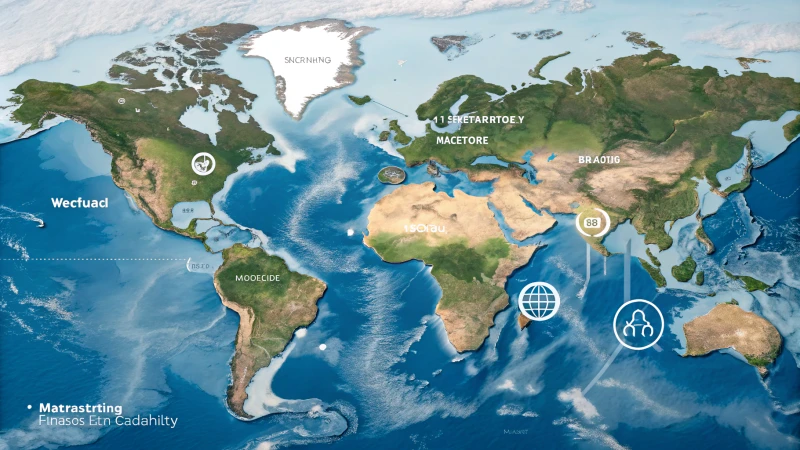
العوامل الاقتصادية
تراعي شركة BlueAir كفاءة التكلفة عند اختيار مواقع التصنيع. ويتضمن ذلك تقييم أجور العمالة والضرائب وجودة الطرق. فهي تستفيد من التصنيع المتطور في الصين البنية التحتية5 لتحقيق وفورات في التكاليف.
تنويع سلسلة التوريد
وقد دفع استحواذ شركة يونيليفر على شركة BlueAir إلى تنويع مورديها، وتجنب الاعتماد على مصدر واحد. وهذا مشابه لتجربتي في تغيير الموردين بعد مواجهة مشاكل كبيرة في عملي. تتضمن استراتيجية "الصين+1" التي تتبعها شركة بلو إير استكشاف دول مثل فيتنام وتايلاند لتعزيز سلسلة التوريد المرونة6.
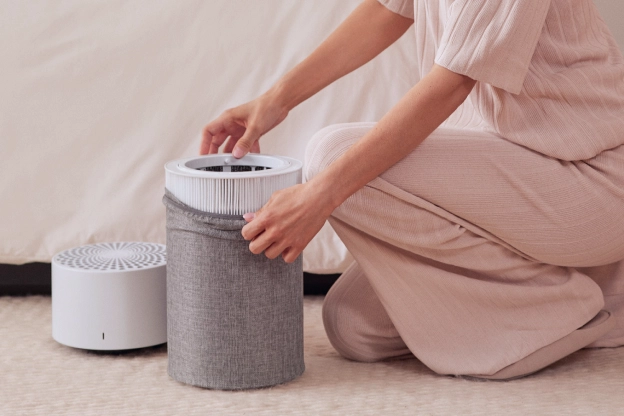
إمكانية الوصول إلى الأسواق
كما أن القرب من العملاء يقلل من تكاليف الشحن وأوقات التسليم، مما يعزز رضا العملاء من خلال عمليات تسليم أسرع. ومن خلال إنشاء مصانع في المكسيك، يمكن لشركة BlueAir خدمة سوق أمريكا الشمالية بشكل أفضل، وهو أمر بالغ الأهمية للمنافسة ضد علامات تجارية مثل Levoit.
الاستقرار الجيوسياسي
تؤثر العوامل السياسية على مواقع المصانع. أفهم كيف يمكن أن تؤثر التحولات في السياسة التجارية على العمليات التجارية. تراقب شركة BlueAir عن كثب القواعد التجارية بين الولايات المتحدة والصين وتستكشف البدائل التصنيع7 المواقع للحفاظ على القدرة التنافسية.
المشهد التنافسي
لقد أصبح سوق أجهزة تنقية الهواء شديد التنافسية بعد جائحة كوفيد-19، على غرار ما واجهته من منافسة شديدة استلزمت الابتكار السريع. وتركز شركة BlueAir على إنتاج وحدات بأسعار معقولة للمتسوقين عبر الإنترنت، وذلك من خلال منصات مثل Amazon US بشكل أساسي.
| العامل | الوصف |
|---|---|
| كفاءة التكلفة | تقييم أجور العمالة والضرائب |
| سلسلة التوريد | استراتيجية "الصين + 1" للمرونة في مواجهة الصدمات |
| الوصول إلى الأسواق | مصانع قريبة من الأسواق الرئيسية |
| الاستقرار الجيوسياسي | مراقبة المخاطر السياسية |
| الميزة التنافسية | نماذج ميسورة التكلفة للتجارة الإلكترونية |
تتبع BlueAir استراتيجية "الصين+1".صحيح
تعمل شركة BlueAir على تنويع الموردين خارج الصين واستكشاف فيتنام وتايلاند.
تقوم شركة BlueAir بالتصنيع في الصين فقط لتقليل التكاليف.خطأ
تقوم شركة BlueAir بتنويع المواقع لتحقيق الكفاءة من حيث التكلفة والوصول إلى الأسواق.
لماذا تفكر شركة BlueAir في استراتيجية سلسلة التوريد الصينية + 1؟
في خضم عالم التجارة العالمية المتغير باستمرار، بدأت في إعادة التفكير في استراتيجيات سلسلة التوريد لشركة BlueAir. ومع التوترات بين الدول ومشاكل الجائحة، قد يكون اختيار نهج الصين + 1 هو خطة الإنقاذ الخاصة بنا. قد يكون هذا حقاً طوق النجاة.
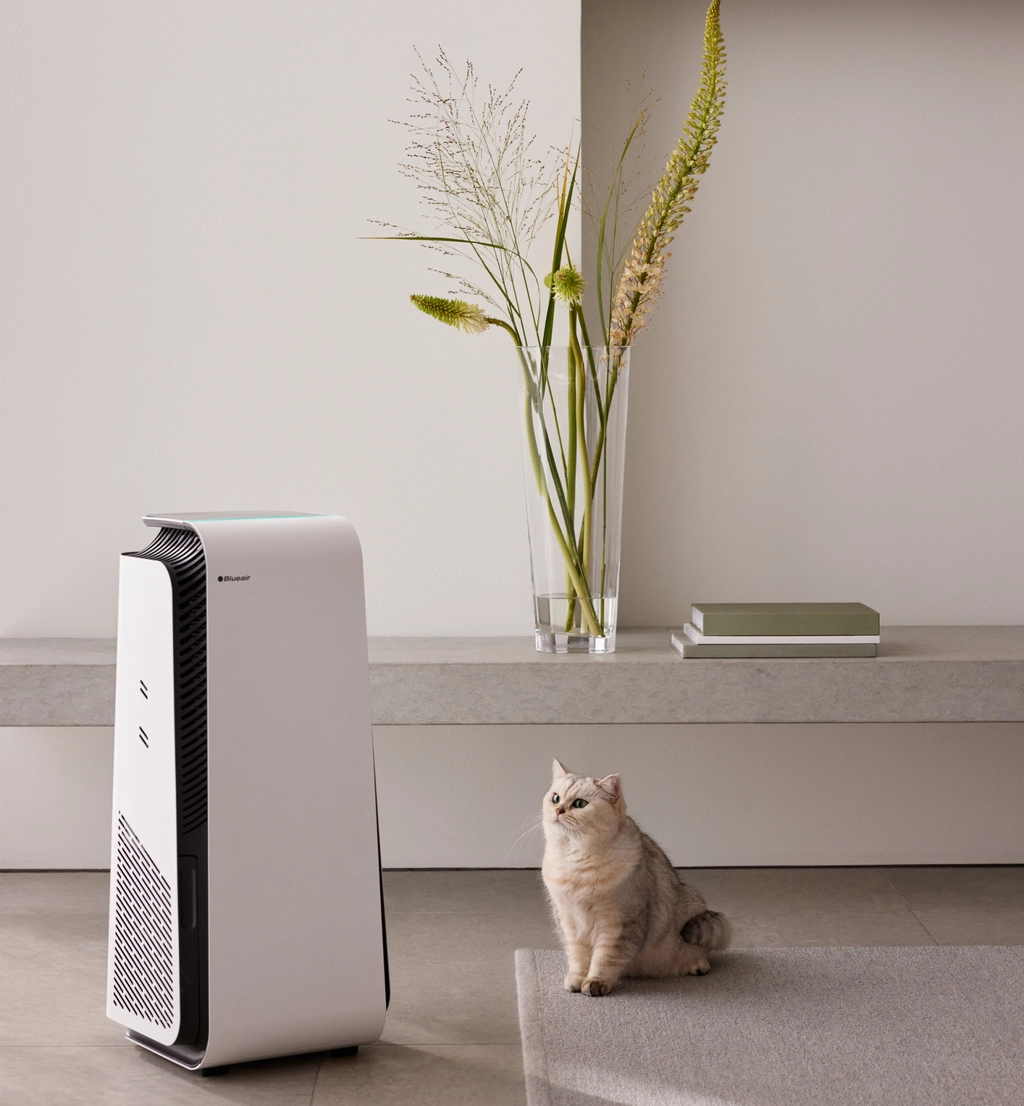
من المحتمل أن تبحث شركة BlueAir في خطة سلسلة التوريد الصينية + 1 لتوزيع مصادر إنتاجها. تساعد هذه الاستراتيجية على تقليل المخاطر التي تأتي من الاعتماد المفرط على الموردين الصينيين. التوترات التجارية العالمية والمنافسة في السوق هي الأسباب الكامنة وراء هذه الخطوة. هذه الأسباب مهمة للغاية بالنسبة لشركة BlueAir.

فهم استراتيجية الصين + 1
فكر في وقت كنا نعتمد فيه كثيرًا على الصين. بدا الأمر منطقياً ورخيصاً وفعالاً. ولكن في العديد من الاجتماعات، ناقشنا في العديد من الاجتماعات ارتفاع تكاليف العمالة وقضايا التجارة. وأدركنا الحاجة إلى خطة احتياطية. ثم ظهرت استراتيجية الصين+1.
تنطوي استراتيجية الصين + 1 على توريد المنتجات من الصين إلى جانب بلد أو أكثر من البلدان الأخرى. ويهدف هذا النهج إلى توزيع المخاطر و تعزيز مرونة سلسلة التوريد8 بعدم الاعتماد على الصين وحدها.
تتعلق هذه الخطة بما هو أكثر من الخدمات اللوجستية. فهي تعني استكشاف خيارات جديدة وعدم الاعتماد على مكان واحد فقط. فمن خلال الحصول على الإمدادات من الصين وبلد آخر، نوزع مخاطرنا. ونتجنب المشاكل إذا حدث خطأ ما.
المشهد الحالي لسلسلة التوريد في بلو إير
تخيل أن مصانعنا الرئيسية في مقاطعة قوانغدونغ مليئة بالنشاط. وقد نجح هذا الإعداد بشكل جيد لفترة طويلة، ولكن له مخاطره أيضاً. فالتغيرات السياسية ومشاكل النقل تهديدات حقيقية. لقد رأيت كل من الجيد والسيئ في هذا الإعداد. لقد حان وقت التغيير.
تاريخياً، اعتمدت شركة BlueAir بشكل كبير على شركائها الصينيين في التصنيع، حيث تقع مصانعها الرئيسية في مقاطعة غوانغدونغ. وقد كان ذلك فعالاً من حيث التكلفة، ولكنه عرّض الشركة أيضاً لمخاطر مثل التحولات السياسية والاختناقات اللوجستية.
مع استراتيجية الصين + 1، يمكننا النظر إلى أماكن مثل فيتنام أو المكسيك. ويمكننا الحصول على الإمدادات من مناطق مختلفة وتقليل المخاطر من خلال تنويع الموردين.
ضغوط السوق التنافسية
بعد الجائحة، بدأ العديد من الأشخاص في بيع أجهزة تنقية الهواء. واكتسبت علامات تجارية مثل Levoit شعبية على الإنترنت. يجب أن نعيد التفكير في استراتيجيتنا لنبقى قادرين على المنافسة.
بعد الجائحة، أصبح سوق أجهزة تنقية الهواء شديد التنافسية. وقد اكتسبت علامات تجارية مثل Levoit زخمًا على الإنترنت، مما دفع BlueAir إلى إعادة التفكير في استراتيجيتها للحفاظ على قدرتها التنافسية.
تتيح لنا سلسلة التوريد المتنوعة الاستجابة بسرعة لاحتياجات السوق وإطلاق منتجات جديدة بشكل أسرع من خلال تقليل المهل الزمنية اللازمة ل إطلاق منتجات جديدة9.
| العامل | التأثير على سلسلة التوريد |
|---|---|
| التوترات التجارية | زيادة التكاليف والتعقيد |
| تكاليف العمالة في الصين | يشجع على استكشاف البدائل الأقل تكلفة |
| المنافسة في السوق | يستلزم دورات إنتاج أسرع |
الاعتبارات الجيوسياسية والاقتصادية
إن فهم التغيرات الجيوسياسية أمر بالغ الأهمية للأعمال التجارية. فالاقتصادات الكبرى مثل الولايات المتحدة تغير قواعد التجارة العالمية.
تلعب السياسات التجارية العالمية، وخاصة تلك التي تشمل الاقتصادات الكبرى مثل الولايات المتحدة، دوراً حاسماً في تشكيل قرارات سلسلة التوريد.
إن النشاط في العديد من البلدان أمر منطقي؛ فهو يحمينا من التغيرات التجارية المفاجئة أو الضرائب.
علاوة على ذلك، فإن وجود مرافق خارج الصين يمكن أن يساعد في التحوط ضد تقلبات العملة والتغيرات التنظيمية والاضطرابات المحتملة بسبب النزاعات الجيوسياسية10.
إن وجود مواقع خارج الصين ليس ذكاءً فحسب، بل هو أمر ضروري لإدارة تقلبات العملة والاضطرابات الناجمة عن الصراعات.
وأرى أن هذه الاستراتيجية المتنوعة أكثر من مجرد إجراء احترازي، فهي ضرورية لبناء سلسلة توريد قوية لمستقبل شركة بلو إير.
تعتمد شركة BlueAir على التصنيع الصيني فقط.خطأ
تدرس شركة BlueAir تنويع سلسلة التوريد الخاصة بها خارج الصين.
تُعد فيتنام بديلاً محتملاً لإنتاج شركة BlueAir.صحيح
تعتبر شركة BlueAir فيتنام جزءاً من استراتيجيتها "الصين+1".
كيف تضمن شركة BlueAir الجودة عبر سلسلة التوريد العالمية الخاصة بها؟
هل فكرت يوماً كيف تحافظ شركة BlueAir على عمل سلسلة التوريد العالمية الخاصة بها بشكل جيد وسلس؟
تحافظ شركة BlueAir على الجودة العالية في سلسلة التوريد الخاصة بها في جميع أنحاء العالم من خلال علاقاتها القوية مع الموردين. وتلعب فحوصات الجودة الصارمة دوراً رئيسياً. وتستخدم الشركة استراتيجية الصين + 1 الذكية لوجود مصانع في أماكن مختلفة. وهذا يساعد على تلبية المعايير العالية. تظل الشركة مرنة مع التغيرات في السوق.
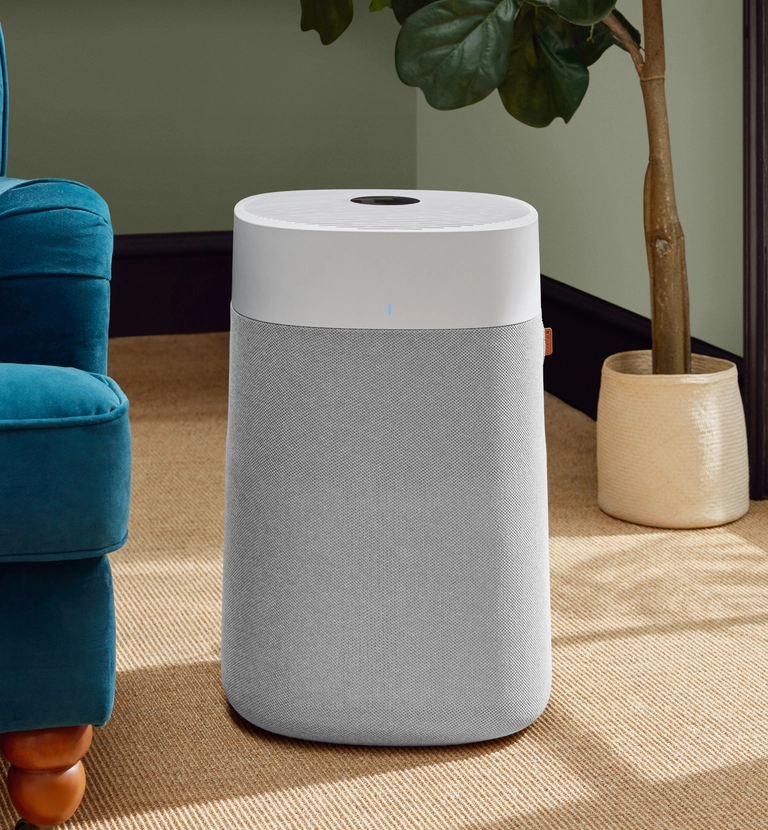
علاقات الموردين واختيار الموردين
العلاقات مع الموردين مهمة جداً. أتذكر أيامي الأولى في العمل مع مختلف المصنعين. تعمل BlueAir، على سبيل المثال، مع العديد من الموردين الموثوقين، بما في ذلك هيسو إير11 في الصين، للحفاظ على الجودة ثابتة. تنمو هذه الشراكات من سنوات من الثقة والحب المشترك للعمل عالي الجودة. الثقة والجودة أمران أساسيان.
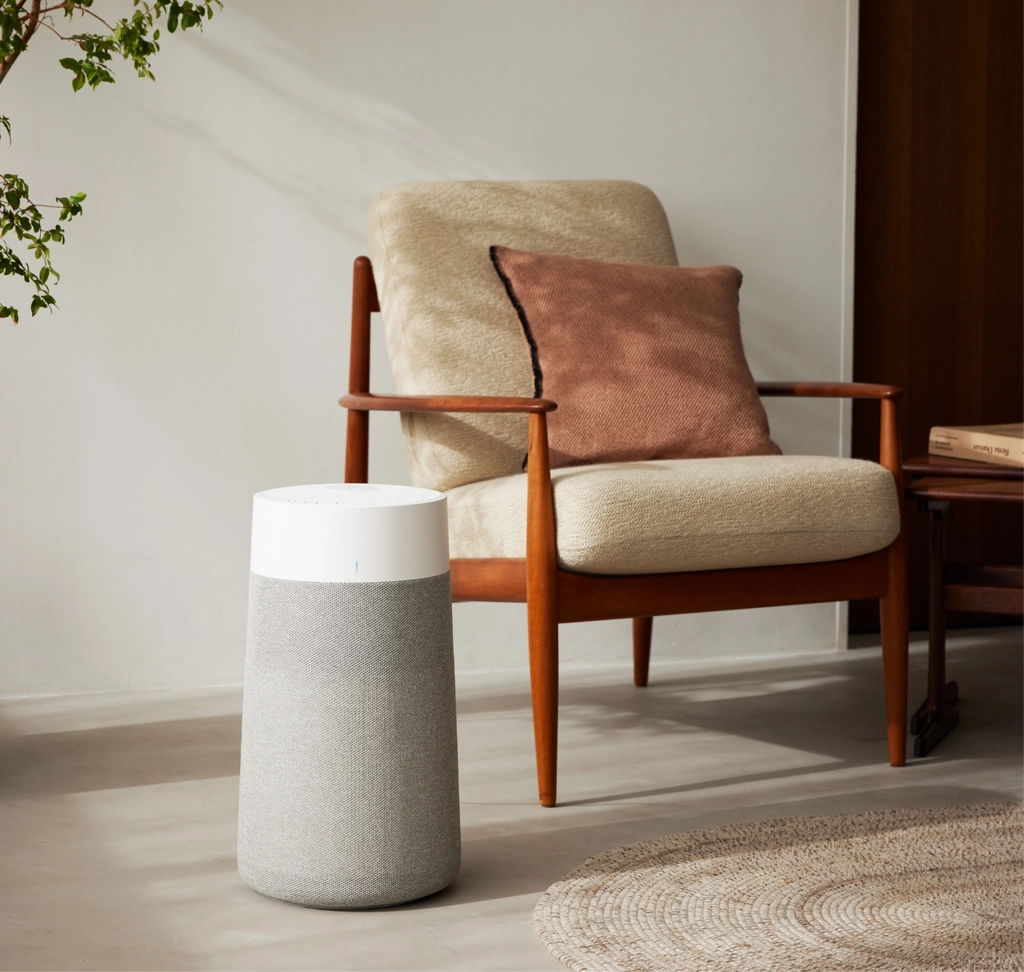
تدابير مراقبة الجودة
فحوصات مراقبة الجودة أمر بالغ الأهمية. يخضع كل منتج لفحوصات مفصلة باستخدام أدوات عالية التقنية. منذ فترة طويلة، قمت بإجراء فحوصات مماثلة كمهندس وهي ضرورية للحفاظ على المنتجات ممتازة باستمرار. الفحوصات الدقيقة هي السر.
استراتيجية الصين + 1
تتطلع شركة BlueAir إلى اتباع نهج الصين + 1 للبقاء في الصدارة في السوق سريع الحركة. وهذا يعني توسيع الإنتاج إلى أماكن مثل فيتنام والمكسيك. فكر في الأمر على أنه وجود خطة بديلة للإجازات، حتى لا تفسد الاضطرابات المتعة. المواقع الإضافية مهمة للغاية.
| البلد | الدور الرئيسي | المزايا |
|---|---|---|
| الصين | مركز التصنيع الرئيسي | بنية تحتية راسخة |
| فيتنام | التصنيع الثانوي | انخفاض تكاليف العمالة |
| المكسيك | موقع التجميع الناشئ | القرب من سوق أمريكا الشمالية |
التكيف مع تغيرات السوق
شهد سوق أجهزة تنقية الهواء تغيرات هائلة بعد جائحة كوفيد-19. تحولت العديد من الشركات، مثل BlueAir، إلى المبيعات عبر الإنترنت، باستخدام مواقع مثل أمازون الولايات المتحدة12للتعامل مع الطلب المتزايد ومنافسة علامات تجارية مثل ليفوا. أصبحت المبيعات عبر الإنترنت مهمة للغاية.

التنويع الاستراتيجي
التجارة العالمية تتغير دائماً. تبحث BlueAir الآن عن شركاء خارج الصين. هذا المزيج من الشراكات يشبه وجود استثمارات مختلفة لتوزيع المخاطر. الحفاظ على سلسلة التوريد قوية ومرنة أمر بالغ الأهمية. التنويع يحافظ على سلامة الشركات.
تقوم شركة BlueAir بالتصنيع في الصين فقط.خطأ
تستخدم BlueAir استراتيجية الصين + 1، وتتوسع في فيتنام والمكسيك.
تجري شركة BlueAir عمليات تفتيش في كل مرحلة من مراحل الإنتاج.صحيح
يستخدمون تكنولوجيا متقدمة لإجراء فحوصات شاملة لمراقبة الجودة.
الخاتمة
يتم تصنيع أجهزة تنقية الهواء من BlueAir بشكل أساسي في فوشان بالصين، مع استراتيجية سلسلة توريد متنوعة لتعزيز المرونة وتلبية الطلب المتزايد في السوق عبر الإنترنت بعد جائحة كوفيد-19.
-
فهم اعتماد شركة BlueAir التاريخي على مناطق تصنيع محددة لاتخاذ قرارات استراتيجية. ↩
-
استكشف كيف أثر فيروس كورونا المستجد (كوفيد-19) على المنافسة في السوق بين العلامات التجارية لأجهزة تنقية الهواء. ↩
-
تعرّف على الشراكة طويلة الأمد بين شركة HisoAir وشركة BlueAir. ↩
-
اكتشف التقنيات المبتكرة مثل تقنية إلغاء الديسيبل المستخدمة في أجهزة تنقية الهواء الحديثة. ↩
-
استكشف مزايا التصنيع في الصين بما في ذلك انخفاض التكاليف والقوى العاملة الماهرة والبنية التحتية المتطورة. ↩
-
اكتشف كيف تقوم الشركات بتنويع سلاسل التوريد خارج الصين للحد من المخاطر. ↩
-
فهم تأثير التغيرات السياسية على قرارات التصنيع العالمية. ↩
-
اكتشف كيف يمكن أن يؤدي تنويع سلسلة التوريد لديك إلى تعزيز المرونة في مواجهة الاضطرابات العالمية وتحسين المرونة التشغيلية. ↩
-
تعرّف على سبب أهمية سلسلة التوريد المرنة في إطلاق المنتجات في الوقت المناسب وبنجاح في الأسواق التنافسية. ↩
-
فهم كيفية تأثير التوترات الجيوسياسية على سلاسل التوريد العالمية وما يمكن للشركات القيام به للتخفيف من هذه المخاطر. ↩
-
تعرّف على شراكة HisoAir الطويلة الأمد مع شركة BlueAir، مع التأكيد على دورها في ضمان الجودة والتصنيع الموثوق. ↩
-
فهم تحول BlueAir نحو قنوات البيع عبر الإنترنت مثل Amazon US استجابةً لتغيرات السوق. ↩

